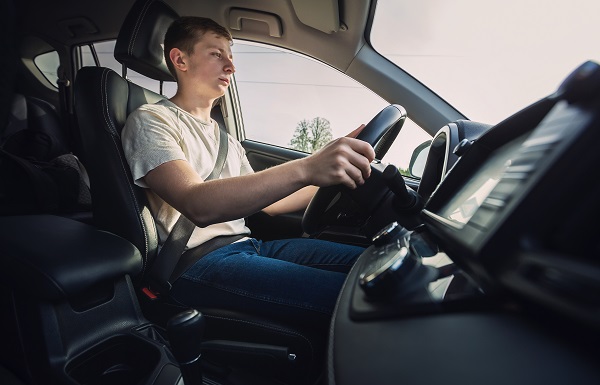Crash Risk for Teen Drivers Spikes During 100 Deadliest Days of Summer

Summer typically brings a time of relaxation, with less work and school and more opportunities for vacation. However, the season also comes with a serious risk on the road: more car accidents. From Memorial Day to Labor Day, known as the 100 Deadliest Days, traffic fatalities involving teen drivers sharply increase.
Nationwide statistics reveal the alarming reality of teen driver-related crashes. From 2013 to 2022, 6,700 people lost their lives in summertime crashes involving teen drivers. In 2022 alone, these crashes claimed 707 lives, marking a 10% increase since 2019. Additionally, an average of 2,146 teens are involved in fatal car accidents each year, with 670 of them occurring during the 100 Deadliest Days. As a result, a total average of 744 people die in crashes during this time of year.
Why does the crash risk for teen drivers increase during summer?
During summer, teens have more free time and often drive for longer periods since schools are out. This extra time on the road leads to more opportunities for risky behaviors. Distracted driving becomes a major issue, with teens using phones and carrying multiple passengers. Speeding and running red lights also contribute to the increased danger.
Earlier research from the AAA Foundation for Traffic Safety reveals insights into how passengers influence teen driving safety. When teens drive with only other teen passengers, the fatality rate for all people involved in crashes increases by 51%. On the other hand, having older passengers (age 35 or older) in the car reduces the overall fatality rate by 8%.
How can parents help prevent crashes involving teen drivers?
Parents play an important role in promoting safe driving for their teens. When choosing a driving school, parents should look for one affiliated with a professional association, such as The American Driver and Traffic Safety Education Association or The Driving School Association of the Americas. Parents should ensure the chosen school uses a curriculum that meets national standards and covers modern topics, including advanced vehicle technology, sharing the road with vulnerable users, and Slow Down, Move Over laws.
Once teens receive their licenses, parents need to stay actively involved in promoting safe driving behaviors. This includes:
- Parents should model safe driving to set a strong example for their teens. They should demonstrate good driving habits such as obeying speed limits, avoiding distractions like phone use, and always wearing seatbelts. Teens are likely to mimic the driving behaviors they observe in their parents, so it’s crucial for parents to exhibit safe driving practices.
- Regular conversations about the dangers of speeding, impaired driving, and distracted driving. Consistent and open communication about the risks associated with unsafe driving behaviors helps reinforce the importance of safe driving. Discuss real-life examples and the potential consequences of speeding, driving under the influence, and using mobile devices while driving.
- Setting and enforcing specific household driving rules and clear expectations. Establishing household rules such as no texting while driving, adhering to speed limits, and always wearing a seatbelt sets clear expectations for teen drivers. Consistent enforcement of these rules underscores their importance and encourages compliance.
- Limiting the number of passengers in the car at once. The presence of multiple passengers can be a significant distraction for teen drivers and can increase the likelihood of risky behaviors due to peer pressure. Limiting the number of passengers helps teens stay focused on the road and reduces the potential for accidents.
- Restricting nighttime driving and setting curfews. Driving at night presents additional challenges, such as reduced visibility and increased fatigue. Setting curfews and limiting nighttime driving can help teens avoid these risks until they gain more experience and confidence on the road.
- Using tools such as the AAA Parent/Teen Driving Agreement. Such resources provide a structured way to outline expectations and responsibilities. This agreement helps facilitate discussions about safe driving and sets clear guidelines that both teens and parents agree to follow.
- Teaching the importance of wearing a seatbelt, as buckling significantly reduces the risk of dying in a crash. Emphasize the critical role seatbelts play in saving lives and reducing injuries in the event of an accident. Encourage teens to buckle up and ensure that all passengers do the same. Reinforce that wearing a seatbelt is a non-negotiable rule every time they get into a vehicle.
Seeking legal help after a car accident
If you or someone you love has been injured in a car accident that was someone else’s fault, it’s important to take action immediately. Don’t let yourself be pushed around by insurance companies or left to handle the aftermath alone.
The experienced Houston car accident attorneys at Smith & Hassler are here to fight for your rights and ensure you receive the compensation you deserve. With decades of experience serving clients in Houston, we’re ready to take on your case and maximize the value of your claim.
We build strong legal cases, negotiate with insurance companies, and, when necessary, represent our clients in court. Don’t wait to protect your rights. Contact us today for a free consultation, and let us handle every aspect of your claim while you focus on your recovery.




